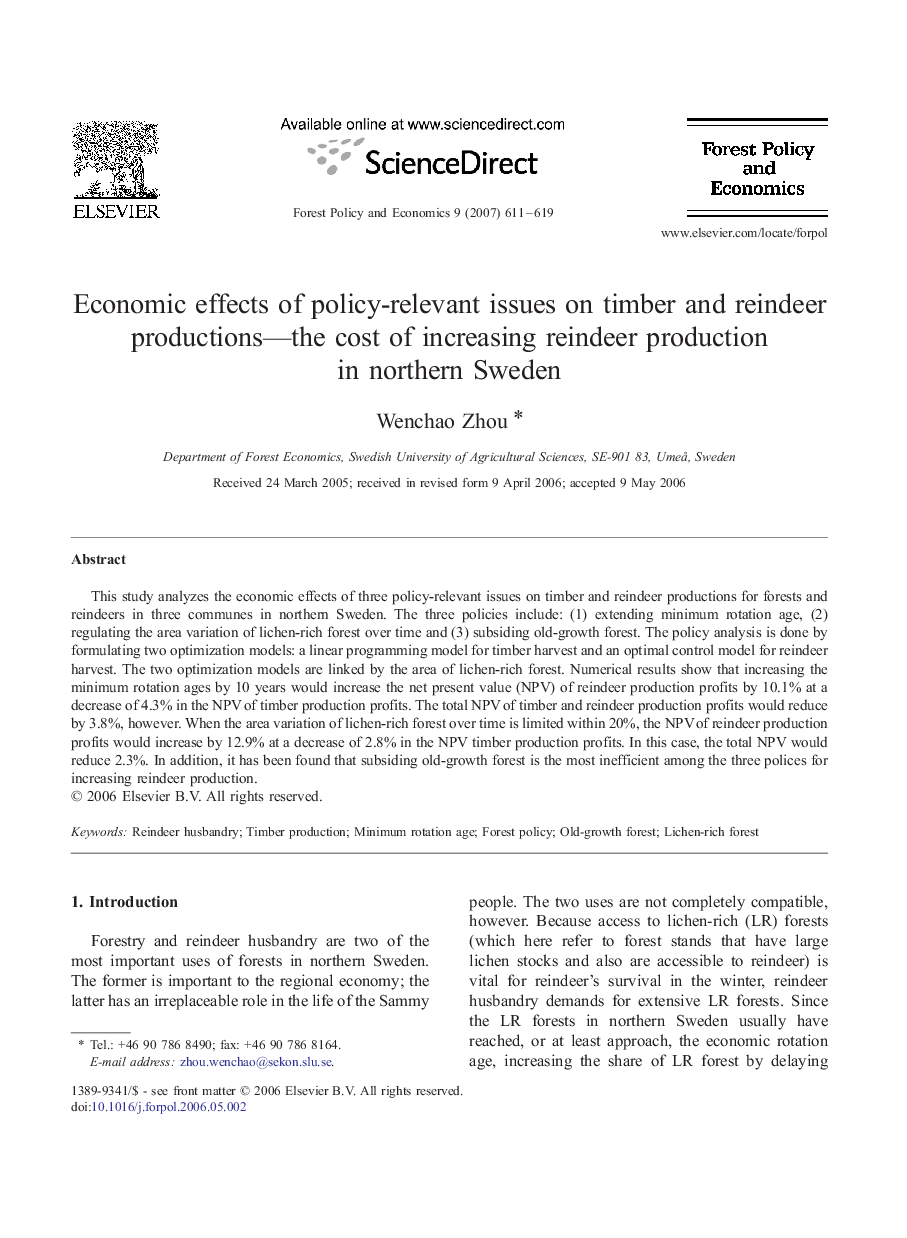| Article ID | Journal | Published Year | Pages | File Type |
|---|---|---|---|---|
| 91357 | Forest Policy and Economics | 2007 | 9 Pages |
This study analyzes the economic effects of three policy-relevant issues on timber and reindeer productions for forests and reindeers in three communes in northern Sweden. The three policies include: (1) extending minimum rotation age, (2) regulating the area variation of lichen-rich forest over time and (3) subsiding old-growth forest. The policy analysis is done by formulating two optimization models: a linear programming model for timber harvest and an optimal control model for reindeer harvest. The two optimization models are linked by the area of lichen-rich forest. Numerical results show that increasing the minimum rotation ages by 10 years would increase the net present value (NPV) of reindeer production profits by 10.1% at a decrease of 4.3% in the NPV of timber production profits. The total NPV of timber and reindeer production profits would reduce by 3.8%, however. When the area variation of lichen-rich forest over time is limited within 20%, the NPV of reindeer production profits would increase by 12.9% at a decrease of 2.8% in the NPV timber production profits. In this case, the total NPV would reduce 2.3%. In addition, it has been found that subsiding old-growth forest is the most inefficient among the three polices for increasing reindeer production.
